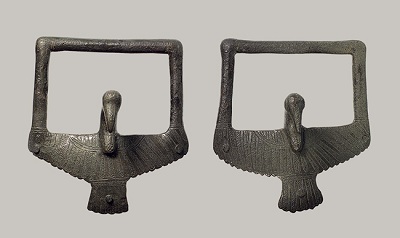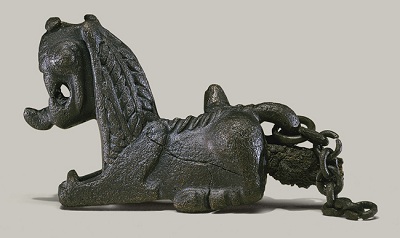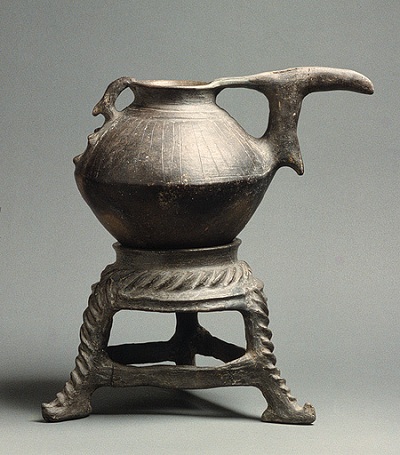

 Tepe Hasanlu is an archeological site of an ancient city located in northwest Iran (in the province of West Azarbaijan), a short distance south of Lake Urmia. The nature of its destruction at the end of the 9th century BC essentially froze one layer of the city in time, providing researchers with extremely well preserved buildings, artifacts, and skeletal remains from the victims and enemy combatants of the attack.
Tepe Hasanlu is an archeological site of an ancient city located in northwest Iran (in the province of West Azarbaijan), a short distance south of Lake Urmia. The nature of its destruction at the end of the 9th century BC essentially froze one layer of the city in time, providing researchers with extremely well preserved buildings, artifacts, and skeletal remains from the victims and enemy combatants of the attack.
No written language is preserved from Hasanlu and archaeologists have yet to identify the ethnic background of the site's inhabitants.
The remains discovered at Hasanlu demonstrate that it was a major local center of commerce and artistic production with close ties to other political and creative centers of the Near East during the early first millennium B.C. Hasanlu's geographic location influenced its development, and may have been a factor in the site's destruction by an invading army around 800 B.C.
Sir Aurel Stein, a British archaeologist, first investigated Hasanlu with a few small, exploratory soundings in 1936. In 1956, the Hasanlu Project was launched under the joint sponsorship of the University Museum of the University of Pennsylvania, The Metropolitan Museum of Art, and the Archaeological Service of Iran. Until 1977, the Hasanlu Project carried out its mission to investigate not only the site itself, but also the cultural and political developments in the surrounding region.
The earliest evidence for occupation at Hasanlu dates from the sixth millennium B.C., during the Neolithic era. The site was continuously occupied from the Bronze Age until around 800 B.C., when a devastating battle and fire destroyed its structures, burning abundant material wealth and hundreds of inhabitants. The attack that destroyed Hasanlu during the Iron Age is thought to have been perpetrated by Urartu, a powerful empire lying to the north.


The Assyrian empire, to the south of Hasanlu, influenced its political and artistic climate. We know from Assyrian royal annals that they conducted military and diplomatic campaigns in the Hasanlu area in the ninth to eight centuries B.C. Local styles of art manufactured at Hasanlu frequently emulated the motifs and figural representations of Assyrian art, perhaps as a way to co-opt the power and authority conveyed in Assyrian depictions of hunting, military conquests, and courtly processions. In particular, locally manufactured carved ivories excavated from Hasanlu frequently depict scenes incorporating Assyrian motifs.
The Iron Age levels have been the most thoroughly investigated at Hasanlu. The remnants of material culture recovered there, especially the artifacts found inside the burned citadel buildings of Hasanlu, includes thousands of ceramic, iron, bronze, stone, glass, ivory, and gold artifacts.


Among the artifacts found in the destroyed buildings, one in particular is justly famous--the Hasanlu Gold Bowl (actually a beaker), now in the Bastam Museum in Iran.
The site was continuously occupied from the Bronze Age until around 800 B.C., when a devastating battle and fire destroyed its structures, burning abundant material wealth and hundreds of inhabitants.
Thousands of artifacts of terracotta, bronze, iron, gold, silver, and ivory were recovered from monumental buildings, which were characterized by an elaborate entrance and a large central hall with columns and bases that might have supported thrones.


or register to post a comment.